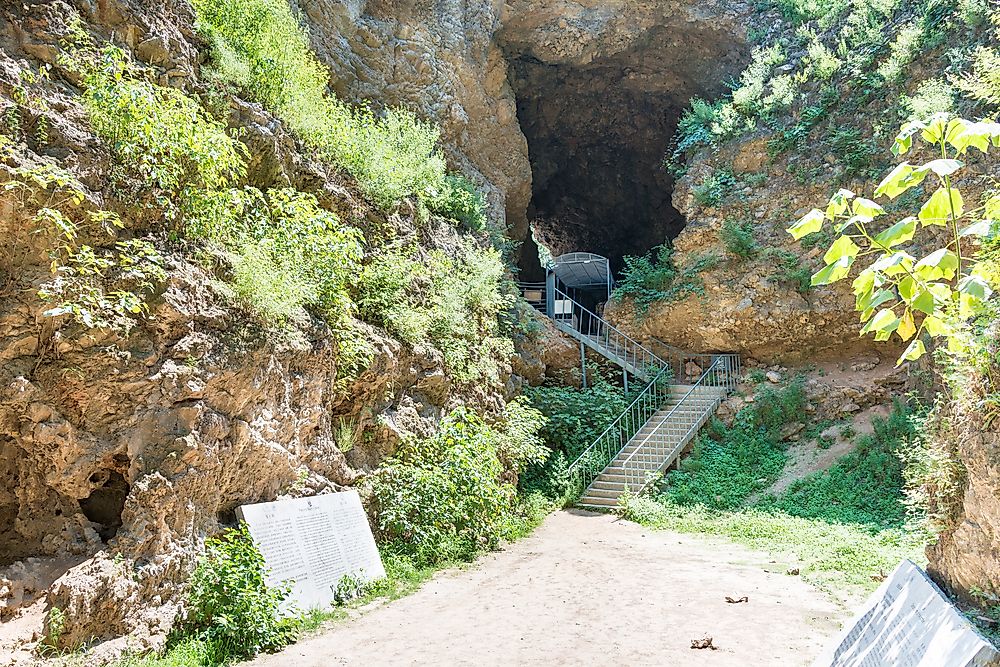Zhoukoudian - UNESCO World Heritage Sites in China

Zhoukoudian, also known as Choukoutien, is a cave system situated in Fangshan district located in Beijing, China. Peking Man, the first fossils of Homo erectus, was found within the Zhoukoudian cave system. A collection of bones from the giant hyena, Pachycrocuta brevirostis, were also found at the site. Johan Gunnar Andersson discovered the site in 1921, and the first excavations, which unearthed two human teeth, were done in 1921 and 1923 by Otto Zdansky.
The Peking Man Site
The Peking Man site, named locality one, was located by Andersson in 1921. The site was initially a natural limestone cave, but the roof had caved in with time. The first excavations in 1921 and 1923 showed evidence of human occupation from about 500,000 to 200,000 years ago.
Excavations were carried out in the cave from 1927 to 1937 and 200 human fossils from 40 individuals, known as Homo erectus, were discovered. 10,000 stoneware pieces and fossils from around 200 animal species were also identified.
Unfortunately, most of the excavated materials were lost during the Japanese occupation from 1937 to 1945 and have never been found. Several other fossils and artifacts were found when excavation was again commenced in 1949.
Parts of the Peking Man Site
The East slope was excavated from 1930 to 1958 and from 1978 to 1979. The site was excavated to a depth of 22.97 feet and stone tools, bird and animal fossils, and burnt bones and ashes were discovered.
The Pigeon Hall site was named in tribute to the pigeons that frequented the site. Excavations on the site were done as from 1930 to 1931, unearthing a large number of Peking man’s bones, and stone tools.
The Upper Cave site was discovered in 1930 and is located in the upper region of Dragon Bone Hill. Excavations in the cave took place from 1933 to 1934, revealing proof of human occupancy in the cave about 10,000 to 20,000 years ago. The cave had two levels; the upper level was used for habitation while the lower level was used as a burial ground. Some of the findings in the cave included three human skulls and remains from about eight individuals known as archaic Homo sapiens. Tools made of bone and stone were also discovered.
Other Excavation Sites In Zhoukoudian
Locality two was excavated in 1921, and it yielded mammalian fossils which included Chinese hyena, hamster, and rhino. Locality three was discovered alongside locality four in 1927, and excavations at the site included fossils from a raccoon dog, porcupine, and badger. Excavation in locality four revealed burned bones, seeds, and fossils from a deer and jackal. The cap deposit, situated 196.85 feet above the riverbed unearthed fossils from the bamboo rat and civet. In 1967, the New cave was discovered, but the site yielded no fossils or artifacts. Locality 12 was found in 1933, and excavations at the site found fossils from 22 mammals including an extinct primate and the Sabre-toothed Tiger. Fossils from 36 mammals were unearthed at Locality 13. Locality 14 was excavated in 1933, 1951, and 1953 and fossils from four fish species were found. Locality 15 was discovered in 1932 and is yet to be fully excavated. Presently more than 20 sites bearing fossils have been unearthed in Zhoukoudian making it the most productive source of materials dating to the middle Pleistocene era.











